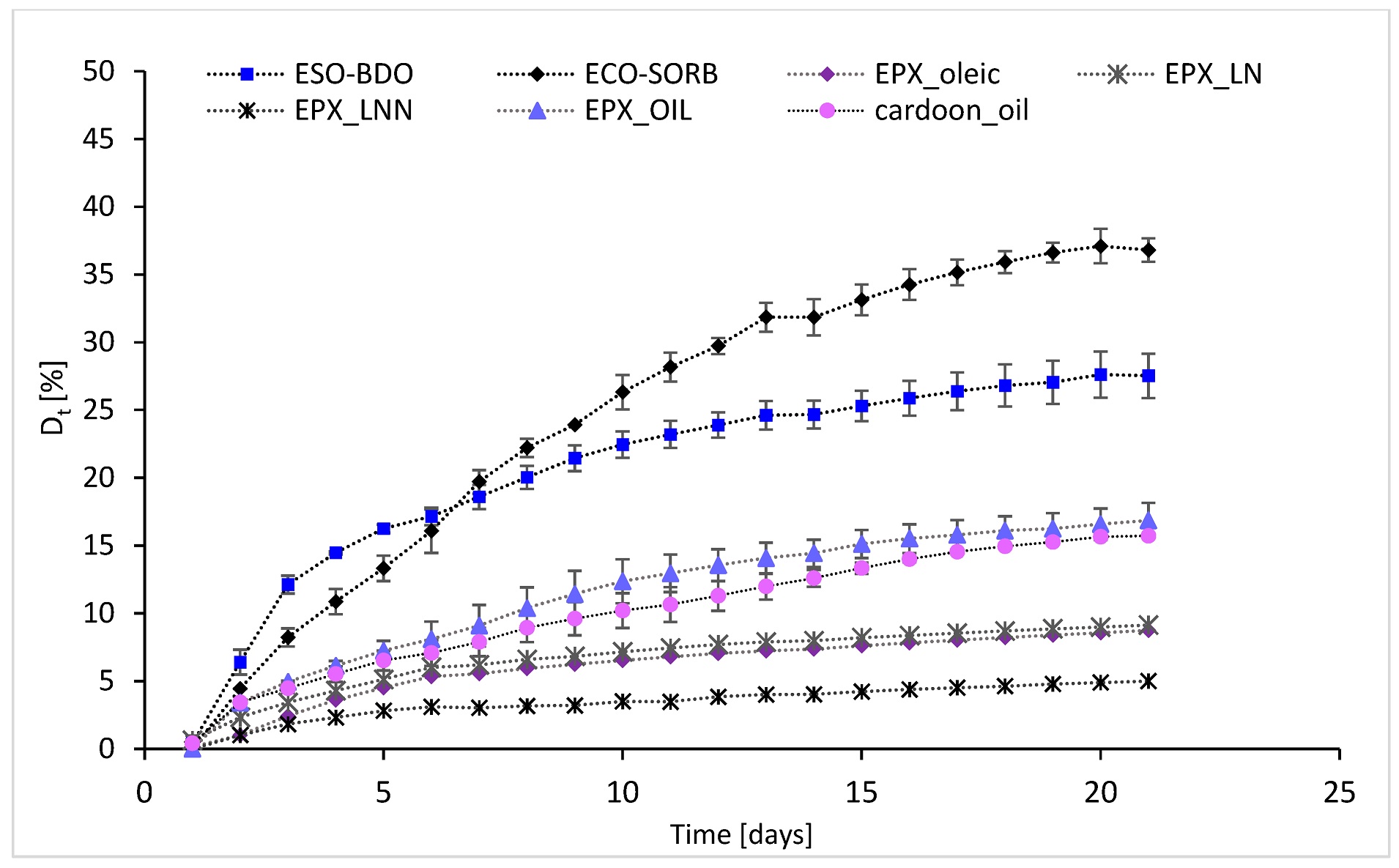Federico Zappaterra, Monia Renzi, Manuela Piccardo, Mariachiara Spennato, Fioretta Asaro, Martino Di Serio, Rosa Vitiello, Rosa Turco, Anamaria Todea, Lucia Gardossi
Polymers 2023, 15(6), 1536; https://doi.org/10.3390/polym15061536
Abstract
The study reports the enzymatic synthesis of bio-based oligoesters and chemo-enzymatic processes for obtaining epoxidized bioplasticizers and biolubricants starting from cardoon seed oil. All of the molecules had MW below 1000 g mol−1 and were analyzed in terms of marine biodegradation. The data shed light on the effects of the chemical structure, chemical bond lability, thermal behavior, and water solubility on biodegradation. Moreover, the analysis of the biodegradation of the building blocks that constituted the different bio-based products allowed us to distinguish between different chemical and physicochemical factors. These hints are of major importance for the rational eco-design of new benign bio-based products. Overall, the high lability of ester bonds was confirmed, along with the negligible effect of the presence of epoxy rings on triglyceride structures. The biodegradation data clearly indicated that the monomers/building blocks undergo a much slower process of abiotic or biotic transformations, potentially leading to accumulation. Therefore, the simple analysis of the erosion, hydrolysis, or visual/chemical disappearance of the chemical products or plastic is not sufficient, but ecotoxicity studies on the effects of such small molecules are of major importance. The use of natural feedstocks, such as vegetable seed oils and their derivatives, allows the minimization of these risks, because microorganisms have evolved enzymes and metabolic pathways for processing such natural molecules.

